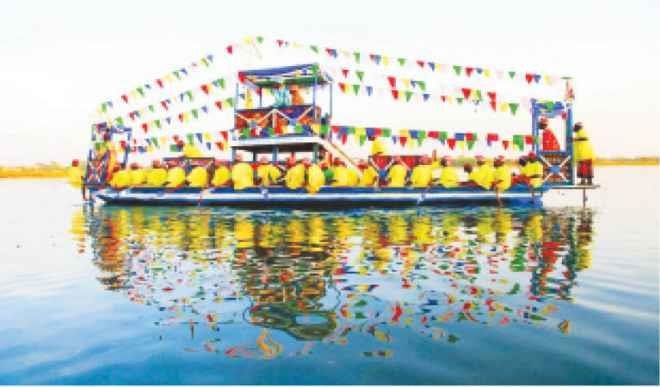A February carnival holds in Abuja
The famous Abuja Carnival came alive in the month of February at the Thought Pyramid Art Centre, Abuja, when Godswill Ayemoba and Julius Umogbai exhibited works from 2007, 2009 and 2011 editions of the cultural fiesta. The photography exhibition which opened on Monday, displayed Nigeria’s cultural affluence, style and elegance in colours, silhouettes and monochromes […]


The famous Abuja Carnival came alive in the month of February at the Thought Pyramid Art Centre, Abuja, when Godswill Ayemoba and Julius Umogbai exhibited works from 2007, 2009 and 2011 editions of the cultural fiesta.
The photography exhibition which opened on Monday, displayed Nigeria’s cultural affluence, style and elegance in colours, silhouettes and monochromes while balancing forms, rhythms and emotions.
For the exhibiting photographers it was important to showcase these works to bring to the consciousness of Nigerians and the government what the country is missing out on not holding the onetime annual carnival yearly.
In his remarks Umogbai a seasoned photographer who has in the last 27 years of his practice executed commissions for various governments and organisations including Canada, the World Bank and the Africa Development Bank among others, said, he believes a photographer should be a disinterested observer and a chronicler of history.
This is what the exposé was about – documenting Nigeria’s history.
As a storyteller, Umogbai advocates that even though perspectives are exaggerated and compositions made to lie, they do not exonerate the photographer of his primary task – storytelling and record keeping.
For Ayemoba, his time at Daily Trust newspaper sharpened his skills in news, documentary and lifestyle photography.
The artiste who has worked professionally as a photographer for the last 12 years photographing the length and breadth of the West African coast and the United Kingdom, said, it was important to showcase Nigeria’s culture in the format that they chose to so that both Nigerians and the international community would to give have perspective of Nigeria away from the generic and often negative portrayal of the country in photographs.
Speaking at the event, the Special Assistant to the President on Research, Mr. Sylvester Imhanode commended the photographers for the quality works they displayed but encouraged them not to leave it at this stage but to do more to sell Nigeria through their craft.
Director of Curatorial Services of the National Gallery of Art, Mr. Ibrahim Adamu, a photographr himself, congratulated Ayemoba and Umogbai for the bold step they took to organise the exhibition.
He said it was important for the young to hone and develop their creative skills in order for them to be self-reliant rather than dependent solely on white collar jobs.
In 2005, Abuja Carnival began with a national perspective involving almost all the states of the federation. They showcased their dances, gastronomy, traditional arts and crafts, masquerades, folklore and costumes among others, as part of the competitive event.
The once famous extravaganza has been on the decline and eventually didn’t hold last year.
The 38 exhibited photographs at the event which ended on Thursday, showcased cultures from northern Nigeria, the middle belt, south, east and west. They included pictures such as Ashim, the Illimi series, Agbaka, Etu’wolo, Ijele, Brass and Mammy Water among others.
It was impossible to take a quick glance over the works as each one was engaging for its composition, theme, origin and history or even simply for its aesthetics. They kept luring guests back for more and each time there was something new as Nafisa Atta, a guest at the event indicated.
She said, “I’m very happy I honoured the invitation because it has been well worth my time. I have gone round the exhibition at least four times and each time it has been impossible to pick a favourite work. The selection was brilliant and all encompassing.
“It also makes me eager to see the live carnival from where such gorgeous pictures emanated.”
